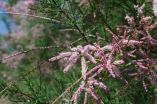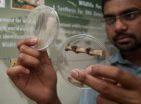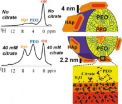(Press-News.org) Los Angeles, CA (June 8, 2011) Regrets—we've all had a few. Although too many regrets can interfere with life and mental health, a healthy amount of regret can motivate us to improve our lives, say researchers Mike Morrison of the University of Illinois and Neal Roese of Northwestern University in the current issue of Social Psychological and Personality Science (published by SAGE).
The researchers telephoned a representative sample of nearly 400 Americans to ask them about what they regret. The most frequent regrets of Americans are about love, education, and work. Romantic regrets—America's most common—focused on lost chances for potential romances, and relationships that did not live up to their potential.
The other common regrets for Americans involved family, education, career, finances, and parenting. Women were more likely to have regrets about relationships (romance, family), and men were more likely to have regrets about work (career and education). It was the lack of romantic relationships and the lack of higher education that were regretted most.
At first, people tend to regret the things they've done more than the opportunities they didn't take. But with time, people come to regret more keenly the chances they let go past. Over their lives, Americans had more regret about the times they've lacked opportunities than about the choices they've made.
"We tend to regret matters that are most important to us," said Morrison, "people crave strong, stable social relationships and are unhappy when they lack them." Regret can be painful, but it can also be useful. "Some people say they try to live life without regret and, I think that's being unfair to the human condition," said Roese, "if we try to squeeze regrets away, we're sacrificing a bit of our humanity."
###
The article "Regrets of the Typical American: Findings From a Nationally Representative Sample" in Social Psychological and Personality Science, is available free for a limited time at http://spp.sagepub.com/content/early/2011/02/28/1948550611401756.full.pdf+html.
Contacts: Mike Morrison, Department of Psychology, University of Illinois. email: mmorris8@psych.illinois.edu Phone: 217-359-3591.
Neal Roese, Professor of Marketing, Kellogg School of Management, Northwestern University. email: n-roese@kellogg.northwestern.edu Phone: 847-491-7109
Social Psychological and Personality Science is a cutting-edge journal of succinct reports of research in social and personality psychology. SPPS is sponsored by a consortium of the world's leading organizations in social and personality psychology representing over 7,000 scholars on six continents worldwide. http://spps.sagepub.com
SAGE is a leading international publisher of journals, books, and electronic media for academic, educational, and professional markets. Since 1965, SAGE has helped inform and educate a global community of scholars, practitioners, researchers, and students spanning a wide range of subject areas including business, humanities, social sciences, and science, technology, and medicine. An independent company, SAGE has principal offices in Los Angeles, London, New Delhi, Singapore and Washington DC. www.sagepublications.com
Lack of relationships, education top list of common American regrets
2011-06-09
ELSE PRESS RELEASES FROM THIS DATE:
Jellyfish blooms transfer food energy from fish to bacteria
2011-06-09
Jellyfish can be a nuisance to bathers and boaters in the Chesapeake Bay on the United States' East Coast and many other places along the world's coasts.
A new study by researchers at the Virginia Institute of Marine Science (VIMS) shows that jellyfish also have a more significant impact, drastically altering marine food webs by shunting food energy toward bacteria.
An apparent increase in the size and frequency of jellyfish blooms in coastal and estuarine waters around the world during the last few decades means that jellies' impact on marine food webs is likely to ...
Penn researchers develop biological circuit components, new microscope technique for measuring them
2011-06-09
PHILADELPHIA — Electrical engineers have long been toying with the idea of designing biological molecules that can be directly integrated into electronic circuits. University of Pennsylvania researchers have developed a way to form these structures so they can operate in open-air environments, and, more important, have developed a new microscope technique that can measure the electrical properties of these and similar devices.
The research was conducted by Dawn Bonnell, Trustee Chair Professor and director of the Nano/Bio Interface Center, graduate students Kendra Kathan-Galipeau ...
New 3-D tumor model
2011-06-09
College Park, Md. (June 08, 2011) – A team of scientists has developed a way to coax tumor cells in the lab to grow into 3-D spheres. Their discovery takes advantage of an earlier technique of producing spherical cavities in a common polymer and promises more accurate tests of new cancer therapies.
As team leader Michael R. King, Ph.D., of Cornell University explains, "Sometimes engineering research tends to be a case of a hammer looking for a nail. We knew our previous discovery was new and it was cool. And now we know it's useful."
Three years ago, the team -- in ...
Ecology biased against non-native species?
2011-06-09
The recent field of invasion biology faces a new challenge as 19 eminent ecologists issue a call to "end the bias against non-native species" in the journal Nature.
Often called aliens, hitchhikers or invasives, some scientists say that non-native species could just as easily be coined "abductees" whose transport links to activities by humans.
The authors of the Nature comments section note that assumptions that "introduced species" offer only deleterious impacts are misguided and "that human-induced impacts, such as climate change, nitrogen eutrophication, urbanization ...
Saving wildlife with forensic genetics
2011-06-09
Wildlife face many threats with spreading urbanization, including habitat loss and inbreeding when populations become fragmented and isolated. It doesn't help that there is a billion-dollar international industry dedicated to the illegal trafficking of wild animals or wild animal parts.
The Conservation Genetics Lab at the University of Arizona is working to conserve and protect wild animals around the world.
"Our work here deals with using genetics for wildlife conservation," said Ashwin Naidu, a doctoral candidate in the School of Natural Resources and the Environment.
One ...
Researchers discover superatoms with magnetic shells
2011-06-09
RICHMOND, Va. (June 8, 2011) – A team of Virginia Commonwealth University scientists has discovered a new class of 'superatoms' – a stable cluster of atoms that can mimic different elements of the periodic table – with unusual magnetic characteristics.
The superatom contains magnetized magnesium atoms, an element traditionally considered as non-magnetic. The metallic character of magnesium along with infused magnetism may one day be used to create molecular electronic devices for the next generation of faster processors, larger memory storage and quantum computers.
In ...
Lifelong gap in health between rich and poor set by age 20
2011-06-09
"We can't buy our way out of ageing," says Nancy Ross, a McGill geography professor. "As we get older we start to have vision problems, maybe some hearing loss, maybe lose some mobility – ageing is a kind of a social equalizer."
Ross is the lead author of a new study about how socio-economic and educational status affects Canadians' health-related quality of life over the course of a lifetime.
"My research looks at how poverty and social disadvantage affect your health status. Our work was about using social circumstances as a lens to look at how people's quality ...
Citrate key in bone's nanostructure
2011-06-09
AMES, Iowa - Bone is one of nature's surprising "building materials." Pound-for-pound it's stronger than steel, tough yet resilient. Scientists at the U.S. Department of Energy's Ames Laboratory have identified the composition that gives bone its outstanding properties and the important role citrate plays, work that may help science better understand and treat or prevent bone diseases such as osteoporosis.
Using nuclear magnetic resonance (NMR) spectroscopy, Ames Laboratory scientist and Iowa State University chemistry professor Klaus Schmidt-Rohr and his colleagues ...
Will psych majors make the big bucks?
2011-06-09
A new crop of college graduates have just landed on the job market. Right now they're probably just hoping to get any job, if at all. However, for psychology majors, the salary outlook in both the short and long term is particularly poor, according to a new study which will be published in an upcoming issue of Perspectives on Psychological Science, a journal of the Association for Psychological Science.
It's generally known that psychology majors don't make a ton of money when they're starting out; they're not like engineering students, many of whom go straight into a ...
How cells' sensing hairs are made
2011-06-09
Body cells detect signals that control their behavior through tiny hairs on the cell surface called cilia. Serious diseases and disorders can result when these cilia do not work properly. New research from UC Davis published this week in the journal Nature Cell Biology provides new insights into how these cilia are assembled.
"It's a basic discovery, but with implications for understanding disease," said Jonathan Scholey, professor of molecular and cellular biology at UC Davis and senior author of the study. Understanding how cilia are assembled and function can help ...



